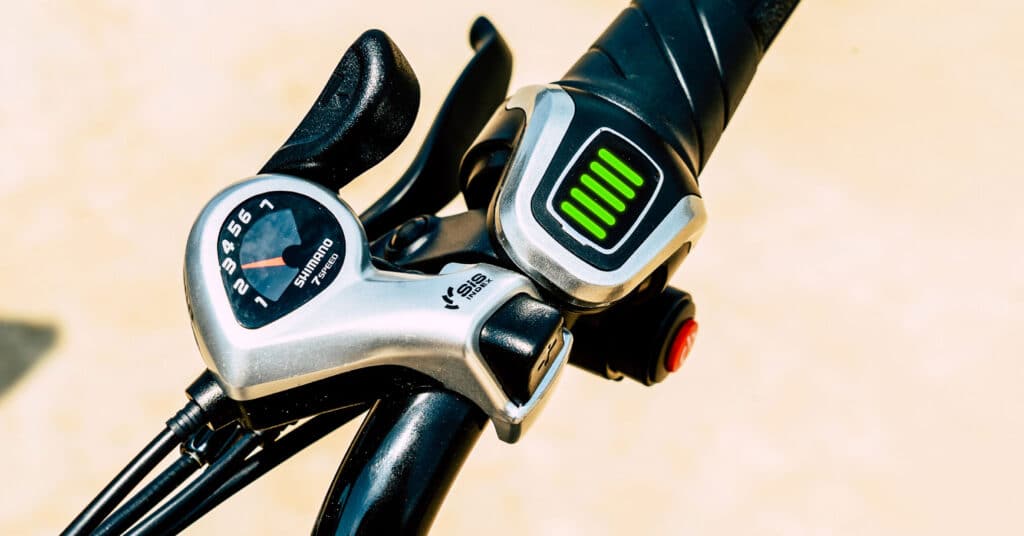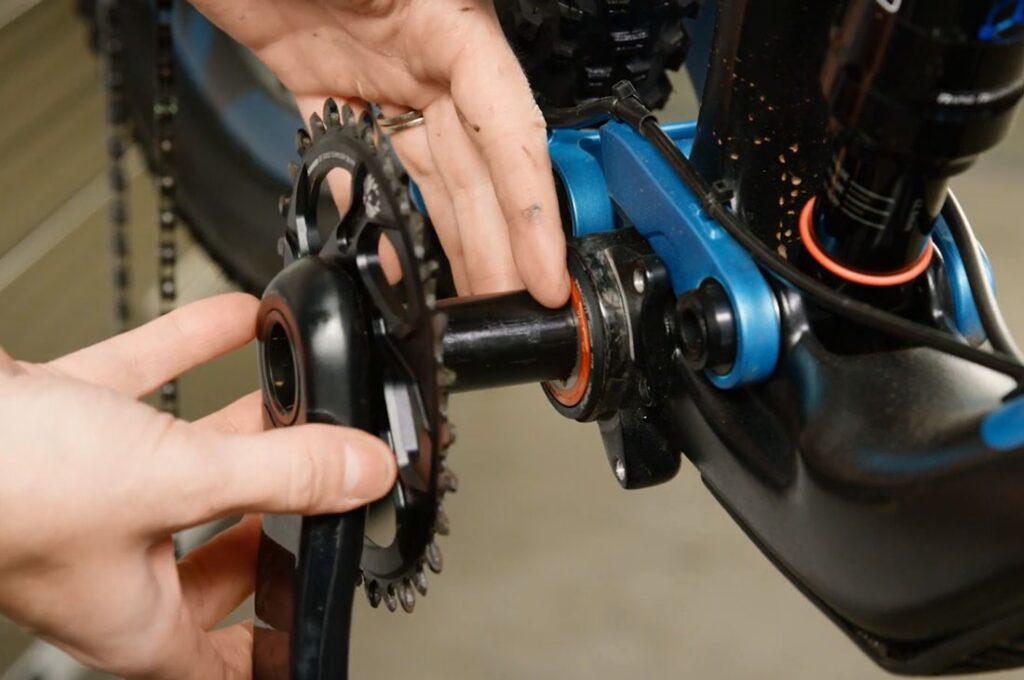E-bikes have been popular as a sustainable and efficient mode of transportation. These e-bikes, just like any other machine, require maintenance and attention to keep them in top condition. One of the common problems these bikes face is incomplete charging, which can lead to poor performance and a shortened lifespan for your battery. In this article, we will discuss the causes of incomplete charging and how to troubleshoot and solve the issue.
Table of contents
Understanding E-Bike Battery Charging Issues
Before delving deep into the causes and solutions of incomplete charging, it is important to know how e-bike battery charging works. E-bikes have lithium-ion batteries that need charging regularly to keep them running. Charging times can vary, depending on various factors such as the battery’s capacity, the charger’s power output, and the temperature conditions.
Common Causes of Incomplete Charging
There are several reasons why your e-bike battery may not be charging fully:
- Loose connections
- Faulty charger or battery
- Aging battery
- Environmental conditions such as a cold temperature
- Electrical problems
How to Identify a Faulty Battery
If your e-bike battery is not holding a charge or is inconsistent in charging, it could be a sign of a faulty battery. A simple way to test the battery’s health is to use a multimeter. The multimeter can check the voltage and current flow of the battery. If the readings are below the recommended levels, you may need to consider getting a replacement battery. It is also important to ensure that the battery pack is not physically damaged or swollen as it can be a sign of internal damage.
The Role of the Charger in Charging Problems
The charger is an essential component of the charging system. If it is not functioning correctly, it can lead to incomplete charging. You should always use a charger that is compatible with your e-bike’s battery. Also, ensure that the charger’s output rating matches or is higher than the battery’s capacity. If the charger’s cable or connectors are damaged, it can cause charging issues. Additionally, charging in extreme temperatures can damage the charger and affect its performance.
Troubleshooting Your E-Bike Battery Charging Problem
Electric bikes, or e-bikes, have become increasingly popular in recent years due to their convenience and eco-friendliness. However, like any other electronic device, e-bikes can experience charging problems that can be frustrating for riders. If you’re experiencing charging issues with your e-bike battery, don’t worry. In this article, we’ll guide you through the process of troubleshooting your e-bike battery charging problem.
Inspecting the Charger and Connections
The first step in troubleshooting your e-bike battery charging problem is to inspect the charger and connections. Check the connections and cables between the charger and e-bike. Ensure that they are firmly plugged in and are not damaged. If the cable or connector is damaged, it can cause charging issues. Additionally, try charging your battery using a different charger to identify if the problem is with the charger.
It’s also important to note that not all chargers are created equal. Some chargers may not be compatible with your e-bike battery, which can cause charging issues. Make sure that you’re using the correct charger for your e-bike battery.
Checking the Battery Health
As mentioned earlier, the battery’s health is critical for its performance. Using a multimeter, check the voltage and current of the battery pack regularly. You should consider replacing the battery if its health deteriorates beyond repair. Also, ensure that the battery is not exposed to high temperatures or direct sunlight, as it can shorten the battery’s lifespan.
It’s important to note that e-bike batteries have a limited lifespan and will eventually need to be replaced. The lifespan of your e-bike battery will depend on several factors, including usage, storage conditions, and the quality of the battery. If you’re experiencing consistent charging issues, it may be time to replace your e-bike battery.
Assessing the E-Bike’s Electrical System
Electrical problems in the system can cause incomplete charging. You can conduct a visual inspection of the electrical system or take it to a professional for an in-depth check-up. The inspection should cover the wiring, circuitry, and controller as they contribute to the charging process. Also, ensure that the e-bike’s electrical connections are not corroded or damaged.
If you’re not comfortable inspecting the electrical system of your e-bike, it’s best to take it to a professional. They’ll be able to identify any underlying electrical issues that may be causing charging problems.
Solutions for E-Bike Battery Charging Issues
Electric bikes, commonly known as e-bikes, are becoming increasingly popular as a mode of transportation. They are eco-friendly, efficient, and cost-effective. However, like any other electronic device, e-bikes are prone to battery charging issues. These issues can be frustrating, but they can be resolved with the right solutions.
Replacing a Damaged Charger
If the issue is with the charger, the first thing you need to do is check if it is damaged. A damaged charger can cause charging issues. If you find that the charger is damaged, you need to get a replacement that is compatible with your e-bike’s battery. You should buy a charger with the same voltage and current rating as the original charger. This will ensure that the new charger is compatible with your e-bike’s battery and will charge it effectively.
It is important to note that using a charger that is not compatible with your e-bike’s battery can damage the battery and reduce its lifespan. Therefore, it is crucial to get a charger that is specifically designed for your e-bike’s battery.
Repairing or Replacing a Faulty Battery
If the battery pack is faulty, you need to repair or replace it. Repairs can be done by a professional, but this is a short term solution. A better long-term option would be to get a replacement battery with the same voltage and capacity as your original battery pack.
Replacing the battery pack can be expensive, but it is worth it in the long run. A new battery pack will ensure that your e-bike runs smoothly and efficiently, and you won’t have to worry about charging issues for a while.
Addressing Electrical System Problems
If the issue is with the electrical system, it is recommended you seek professional help. A qualified electrician or mechanic will inspect the system, identify the problem, and repair or replace the faulty components.
Electrical system problems can be complex and dangerous, so it is important to seek professional help. Trying to fix the problem yourself can lead to further damage and may even cause injury.
In conclusion, e-bike battery charging issues can be frustrating, but they can be resolved with the right solutions. By identifying the root cause of the issue and taking the appropriate corrective measures, you can ensure that your e-bike runs smoothly and efficiently.
Tips for Prolonging Your E-Bike Battery Life
Now that you have learned how to troubleshoot and solve e-bike charging issues, here are some tips to help you prolong your e-bike battery life:
Proper Charging Techniques
One of the most important things you can do to prolong the life of your e-bike battery is to use the recommended charger and charge the battery correctly. It’s important to follow the manufacturer’s instructions when charging your battery. Overcharging or undercharging the battery can damage it and shorten its lifespan. Additionally, charging your battery in extreme temperatures can also affect the battery and the charger’s performance. To ensure that your battery lasts as long as possible, it’s essential to use the correct charging techniques.
Regular Maintenance and Inspection
Another important factor in prolonging the life of your e-bike battery is regular maintenance and inspection. You should inspect your e-bike’s battery, charger, and electrical system on a regular basis to check for any damage or wear and tear. It’s also essential to ensure that the battery is clean and free from dirt, debris, and moisture. You can clean your battery using a soft, dry cloth. Avoid using water or any cleaning solution, as this can damage the battery’s components. By regularly inspecting and maintaining your e-bike and battery, you can help ensure that they last as long as possible.
Storing Your E-Bike and Battery Correctly
Proper storage of your e-bike and battery is crucial to prolong their lifespan. When storing your e-bike, it’s important to keep it in a dry and cool place, away from direct sunlight. This can help prevent damage to the bike’s components, including the battery. The battery should also be stored in a cool and dry place, away from any moisture or dampness. If you’re not using your e-bike for an extended period, you can remove the battery from the bike to protect it from damage. By storing your e-bike and battery correctly, you can help ensure that they last as long as possible and continue to perform at their best.
For more on how to maintain your e-bike battery read our article: Best Practices for your E-Bike Battery.
Conclusion
Incomplete charging can affect your e-bike’s performance and shorten its lifespan. It is important to identify the root cause of the issue and take corrective measures appropriately. Proper maintenance and inspection, as well as proper charging techniques and storage, can prolong your e-bike’s battery life and prevent charging issues. By following the tips outlined in this article, you can keep your e-bike in top condition and enjoy a hassle-free ride.


